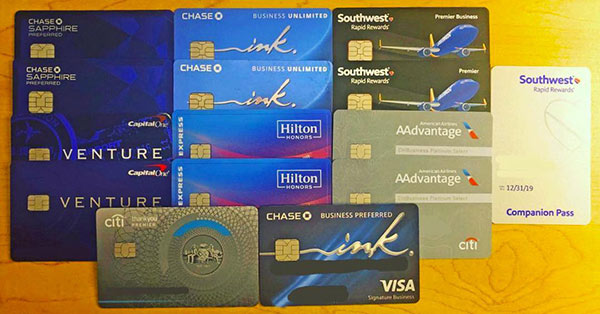Try these 10 money-saving hacks to help cut costs and focus on your bigger financial goals.

This post may contain affiliate links. Please see our disclosures for more information.
Whether or not you see it coming, day-to-day life can be costly, with small, incremental expenses adding up quickly over time.
Fortunately, many of these expenses can be easily avoided.
Try these 10 money-saving hacks to help give your finances a boost.
1. Take out books, magazines, and movies from your local library
In her iconic book about decluttering, Marie Kondo points out that many books, once read, are often left to sit on your shelf.
For those who buy books on a regular basis, that might mean a lot of dollars spent on a single-use item. Sure, if you actively lend your books out, that’s a different story—but if you find that your books are generally read only once, you should reconsider buying and simply borrow from your local library instead.
Don’t forget that in addition to books, libraries hold movies and magazines, making them all the better for getting your pop culture fix.
For maximum convenience, if you have a Kindle or other reading tablet, use it to take out ebooks. That way, instead of going to the library in person, you can browse and borrow titles through your library’s website. What’s more, you can hold onto your borrowed books for much longer. Simply turn your Kindle to airplane mode; as long as you avoid connecting to Wi-Fi, you can keep reading your borrowed ebooks past their due date and without facing any fees.
2. Do home workouts and invest in gym equipment
The average gym membership costs $58 a month, or close to $700 a year if you don’t include a signup fee. Of course, this amount is even more if you opt for a boutique gym like pilates, cycling, or CrossFit.
Yet 67% of gym members make little use of their memberships. If you can relate, then consider investing in basic fitness equipment and exercising at home.
No, that doesn’t mean buying a full-body machine for your garage—those can cost several hundreds of dollars or more. Instead, pick and choose versatile fitness equipment that meets your budget, like:
- Jump rope
- Slam ball or medicine ball
- Pull-up bar
- Resistance bands
Not sure how to maximize these tools for the best workout?
The internet is your best friend. With so many health and fitness resources online, it’s easier than ever to find personal trainer-approved workout routines that align with your exercise goals.
3. Plan out your meals
The average four-person family in the U.S. spends $1,500 per year on wasted food like unwanted leftovers and spoiled items. Needless to say, that money could be better spent elsewhere—like going toward debt, savings, or an emergency fund.
That’s why you should plan your meals in advance.
“Meal planning has been my biggest ‘hack,’” says the personal finance blogger Financial Mechanic. “I used to be too tired in the evening to think about what to eat the next day, and if I waited until morning—forget it!”
“Then I started planning my meals on Sunday. It cut down on decision-making during the week, decreased food waste, and ultimately allowed me to bring my personal grocery spending down to $108 per month.”
4. Carpool
Gas and vehicle maintenance aren’t cheap, but you can reduce the necessity of paying for these two expenses through carpooling.
For example:
- If you’re responsible for driving your kid(s) to/from school and extracurricular events, it’s worth looking into neighborhood or community carpool programs with other parents. If none exist, consider setting one up.
- For social events, ask any close friends if you can go together. Aside from cutting down on gas, there’s the added bonus of having more social time with your pal.
- If you’re comfortable with your colleagues and happen to live in reasonable vicinity of one another, consider carpooling to and from work together. Your schedules may not always align, but even if it’s only once or twice a week, carpooling will help whittle down your commute expenses.
- Even for non-social occasions, you can still carpool with friends and relatives. That could be running errands like grocery shopping or going to the dry cleaner—it doesn’t hurt to ask if anyone else in your close network is headed that way.
On top of saving you money, carpooling even benefits the environment by reducing overall fuel consumption.
5. Close your blinds and use fans during hotter months
Running central air conditioning costs over a hundred times more than using only a regular ceiling fan a month. It’s probably no surprise, given that your electricity bill rises as the months get warmer and you use more AC.
To bring down your home’s energy costs in the summer months, keep your window blinds drawn in the daytime, or at least during peak sunshine hours. By keeping the sun out, you can reduce the amount of heat energy entering your home so that it’s easier to maintain a cool temperature.
To go a step further, invest in thicker curtains and get fans for your home. Depending on the climate you live in, it may be impractical or simply unsafe to forego air conditioning altogether—but by adding fans into the mix, you can raise your thermostat about 4°F without sacrificing comfort.
6. Clear your browsing history when shopping online
Like it or not, your web browser tracks your online search history—and this can impact the shopping deals you see online.
For instance, many companies offer a substantial discount for first-time customers who visit their site. If you decide to return at a later date, the deal may no longer be there, as your browsing history shows you’ve stopped by before.
Or, as with airlines and travel websites, you might actually see prices fluctuate between each instance you visit. To avoid this dynamic pricing, clear your browser’s cookies and search history before shopping online.
7. Opt for generic brands
For some items, the difference between generic and name brands is nonexistent—or subtle at best. In fact, some store brands are actually produced by name brand companies.
For products of this nature, you can easily save money by going generic. That includes:
- Baking and cooking supplies
- Canned beans and vegetables
- Cleaning products
- Condiments
- Medication
- Plastic wrap and aluminum foil
8. Max out the useful life of your stuff
“Most things that we buy can last years or even decades, if we keep them around long enough to let that be the case,” says Stacy Trinh, financial blogger at Keeping Up with the Changs. “If you wait for your stuff to actually break or wear out before buying new things, you’ll find a huge drop in the frequency you spend money.”
So how can you prolong the life of your stuff?
- Take better care of your items, whether that’s your appliances, electronics, clothing, or something else. “Don’t use unnecessary Hulk force when handling it, put it back in place so you don’t lose it, and store it properly to avoid unnecessary wear and tear,” Trinh says.
- Repurpose your stuff for other uses. Trinh offers a few examples: “Plastic take-out containers make for convenient at-home Tupperware, and old shirts can find new life as shop rags. Not only is this approach much easier on your wallet, it’s super environmentally-friendly, too!”
9. Air dry your clothes on sunny days
Air drying your clothes doesn’t necessarily mean hanging a clothesline in your backyard, though you’re free to, by all means.
Instead, invest in a nice laundry drying rack that you can set up inside your home—ideally by a window or anywhere with adequate sun or ventilation.
You don’t have to do this for every load of laundry; after all, depending on the weather, it won’t always be practical to air dry. However, reducing your dryer usage by even just a little can help lower your monthly electricity bill.
10. Get miles and points for travel through credit card bonuses
John H., personal finance writer at How to FIRE, shares his favorite money-saving hack for traveling: credit card signup bonuses.
“My wife and I strategically open/close credit cards for the point/mile signup bonuses,” John says, adding that this allows them both to “see the world for a fraction of the cost.”
How exactly does this work?

“We go back and forth between who opens them, and having a business allows us to open significantly more cards,” John explains. “On average, we open 6-8 new cards a year total… We usually pick where we want to go and then plan which cards best get us there and which have the best redemption value. Signup bonuses usually vary from 40,000 to 150,000 points, and although business cards generally have a higher minimum spend, they offer more points.”
But before you pull the trigger on applying for credit cards, John notes: “We highly don’t recommend anyone with credit card debt get into this; it’s important to have strong financial habits before getting into credit card hacking. We pay our balances in full multiple times per month and have had excellent credit since we were in college.”






Great post on expenses that actually apply to most people! There are soooo many articles out there with tips that are based on lifestyle-specific choices (aka lattes), but virtually everyone needs to drive, dry their clothes, eat, and so on. Job well done!
Thanks so much for your kind words, Stacy! And glad you could contribute as well!
I love #10!
I primarily use my American Express Delta Gold credit card. I am a pretty loyal Delta flyer, and the points (Skymiles) I get each month really add up. I am sitting on about 110k Delta Skymiles at this point….. saving up for something awesome.